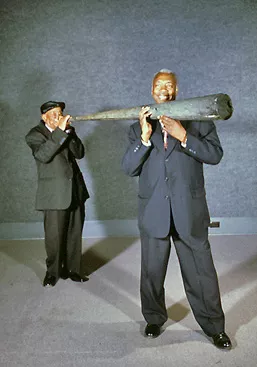The story of two camp meetings, Indian Field and neighboring Shady Grove, is the story of the role religion has played in the shaping of rural life in the Lowcountry. The earliest camp meetings were affiliated with the Methodist church, although many other denominations used such gatherings to establish permanent congregations. The camp meeting soon became a wide-spread institution within American Christianity.
Shell Johnson upheld an unbroken camp meeting tradition that has been in existence since the 1850s. Caesar Wolfe, the founder of the African American camp meeting Shady Grove, served as the first trumpeter. Shell Johnson was only the fourth trumpeter in the rich history of the Shady Grove Camp Meeting. Johnson blew the horn since October of 1959, playing at both Shady Grove and the white camp meeting at Indian Field.
Both camp meetings revolve around the tradition of blowing the horn, or trumpet, to call participants to the tabernacle for worship. Both Shady Grove and Indian Field are set up much like the Israelite camps described in the book of Exodus. The central worship site, or tabernacle, faces east and is surrounded by “tents.” While these tents were not initially permanent structures, by the turn of the century, camp meeting participants had begun to build small, permanent buildings, although they are still commonly called tents. In fact, many even referred to Shell’s horn as a shofar, the Hebrew word describing the ram’s horn blown by the Israelites. Johnson passed away in 2010. He received the Jean Laney Harris Folk Heritage Award in 2003.


